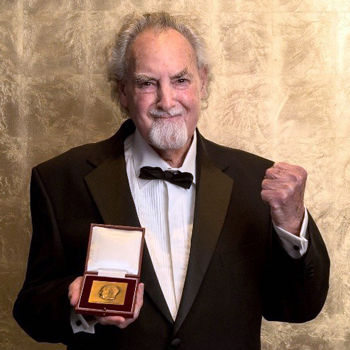
Professor Geoffrey Burnstock has been awarded the Macfarlane Burnet Medal and Lecture, the Academy’s highest award in the biological sciences.
Professor Burnstock, an Academy Fellow, recently returned to the University of Melbourne to continue his scientific investigations after a 42-year career at University College London. He presented the Macfarlane Burnet Lecture on ‘The Discovery and Development of Purinergic Signalling’ at the Academy's Science at the Shine Dome event in May.
In his lecture, Professor Burnstock presented a story of success against the odds. Coming from a ‘boxing family’ in the UK, he explained how immigrating to Australia gave him the opportunity to propose a revolutionary hypothesis, which most scientists did not accept for the next 20 years. However, with persistent accumulation of new experimental evidence, his hypothesis was finally accepted. It is currently leading to exciting new therapeutic developments through the research of thousands of medical scientists in many countries.
Professor Burnstock is internationally recognised for the discovery of purinergic neurotransmission (i.e. ATP as an extracellular signalling molecule), a novel signalling system between cells that is of central importance for many biological processes. His 1976 discovery challenged established concepts of the biology of cell messengers and neurotransmission.
More recently, he has focused on a cell communication process that takes place in metabolism known as purinergic signalling. This research has had an impact on the understanding of pain mechanisms, bone formation and skin and bladder cancer and kidney disease.
He continues to be an inspiration for many and his vision and creativity have enabled and driven the research of a very large number of laboratories around the world. He has had a very large impact on this field by his initial discovery and its elaboration, involving challenge to Dale’s principle of ‘One nerve terminal—one transmitter’.
© 2025 Australian Academy of Science